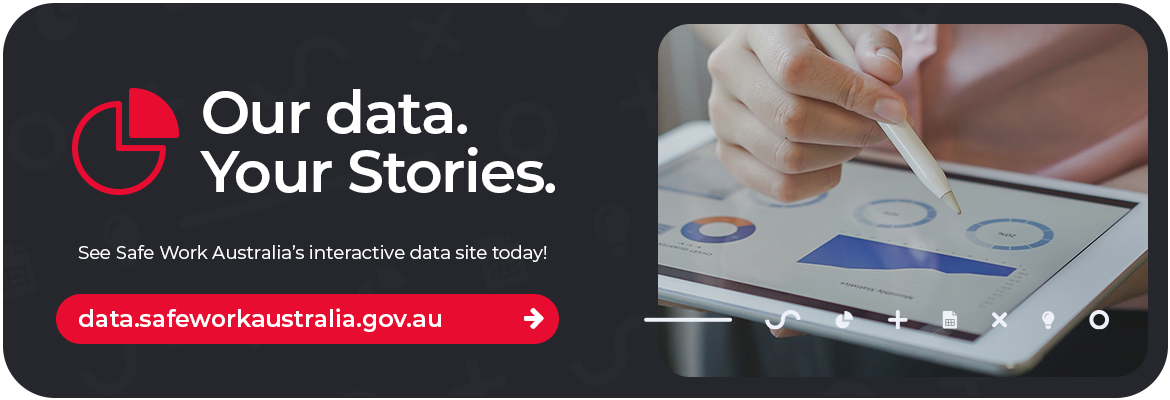Safe Work Australia has published the Comparative performance monitoring report 23rd edition, which provides the latest trend analyses on WHS and workers’ compensation schemes operating in Australia and New Zealand.
The report includes analysis of:
Safe Work Australia has published the Australian worke
New data reporting tools released in December on our data website, Our Data. Your Stories., have now replaced the Lost Time Injury Frequency Rate (LTIFR) calculator.
Have you visited and explored Our data. Your stories. – our interactive data website? We want to hear from you!
In December, Safe Work Australia launched a collection of new reporting tools to help users more accurately assess, measure and report data on WHS performance.
Safe Work Australia has published new data on the Jurisdictional Comparison dashboard for 2022-23 as part of our data website –
Today, Safe Work Australia launched a collection of new tools on its data website, Our Data. Your Stories., to help users assess, measure and report on work health and safety (WHS) performance.
The tools include:
The latest edition of the Safe Work Australia Quarterly Newsletter is now available!
Safe Work Australia (SWA) has published a new report on work-related injuries.
Safe Work Australia has published the Comparative performance monitoring report 24th edition, which provides the latest trend analyses on WHS and workers’ compensation schemes operating in Australia and New Zealand.
The report includes analysis of:
Safe Work Australia has published the Australian w
This infographic provides statistics about workers’ compensation claims in Australia.
The Australian workers’ compensation statistics (AWCS) report provides detailed statistics about workers’ compensation claims that were lodged in Australia between 2000–01 and 2020–21, including preliminary data for 2020–21 and trend analysis to 2019–20.
This newsletter highlights what Safe Work Australia is doing across the spectrum of work health and safety (WHS) and workers’ compensation to achieve our vision of healthier and safer workplaces.
Each year, Safe Work Australia produces national work health and safety statistics, providing important evidence on the state of work health and safety in Australia.
The report was updated 17 January 2023. The update affected page 11 of the report only.
Safe Work Australia commissioned Deloitte Access Economics to explore the cost of work-related injury and illness in Australia and estimate how much value could be created within the Australian economy by removing work-related injury and illness.
The Australian workers’ compensation statistics (AWCS) report provides detailed statistics about workers’ compensation claims that were lodged in Australia between 2000-01 and 2019-20, including preliminary data for 2019-20 and trend analysis to 2018-19.
This includes trends, gender and age comparisons, and industry and occupation breakdowns for work health and safety and serious workers’ compensation claims in Australia.
This report provides a snapshot of COVID-19 related workers’ compensation claims from 1 January to 31 December 2020.
Work-related diseases data can now be seen on our new interactive data page on the Data website.
Work-related diseases data can now be seen on our new interactive data page on the Data website.
Work-related diseases data can now be seen on our new interactive data page on the Data website.
About our data can now be seen on our new about page on the Data website.
Work-related injuries data can now be seen on our new interactive data page on the Data website.
Work-related diseases data can now be seen on our new interactive data page on the Data website.
The road transport industry involves transporting freight by road and operating buses and taxis to transport passengers.
The public administration and safety industry has a high number of work-related deaths, injuries and illnesses.
As a person conducting a business or undertaking, you have a duty to keep workers and your workplace safe.
The manufacturing industry has a high number of work-related deaths, injuries and illnesses. As a person conducting a business or undertaking, you have a duty to keep workers and workplaces safe from the risks associated with manufacturing.
Construction work is particularly dangerous.
The agriculture industry includes businesses that:
-
grow and cultivate horticultural and other crops (except forestry)
-
breed, raise or farm animals (except aquaculture).
The accommodation services industry can pose health and safety risks for workers and visitors.
Explore our data through our new Interactive Dashboards and Data Insights on the Data website.
This infographic provides statistics about workers’ compensation claims in Australia.
This includes trends, gender and age comparisons, and industry and occupation breakdowns for work health and safety and serious workers’ compensation claims in Australia.

